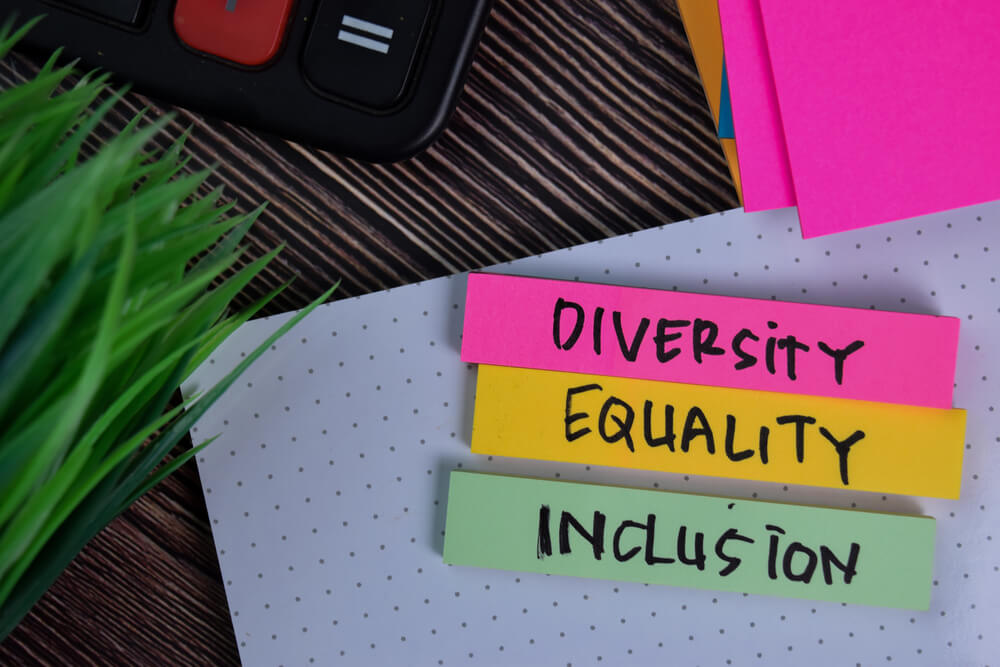Promoting Diversity and Inclusion in Pursuit of Wellness and Equity Outcomes

Luke Smith is a writer and researcher turned blogger. Since finishing college he has been trying his hand at being a freelance writer. He enjoys writing on a variety of topics but technology and digital marketing topics are his favorite. When he isn’t writing you can find him traveling, hiking, or gaming.
Diversity, equity, and inclusion (DEI) are driving forces behind better employee wellness and productivity. Organizations that cherish their employees and treat everyone with the dignity and respect they deserve will benefit from a broader range of insights and foster a happier, more motivated workforce.
This sentiment is echoed by the White House’s recent executive order on DEI, which finds “a growing body of evidence demonstrates that diverse, equitable, inclusive, and accessible workplaces yield higher-performing organizations.”
However, not all public sector employers understand how to promote diversity and inclusion in the workplace. This is completely understandable, as previous employee motivation models did not fully appreciate the jarring impact that discrimination has on employees or the root causes behind inequity.
Leaders today can push for higher standards in these workplaces that may have fallen a little behind.
Assessing Current Culture
Taking the initiative on DEI is a sure-fire way to improve wellness and equity at work. However, well-meaning leaders may find that their efforts to promote an inclusive workplace misfire if they don’t take stock of the current culture.
There are plenty of factors that influence work culture in the public sector. Everything from the education level of employees to the local infrastructure around the workplace impacts how employees think and feel about themselves and their work.
Leadership can take stock of the current culture at work by:
- Running anonymous surveys where employees can safely share their feelings
- Take a sample demographics questionnaire to identify gaps in diversity
- Maintain an “open door” policy on matters that concern DEI
- Re-read current culture-oriented policies with an eye for DEI
Taking stock of the current culture at work helps leaders make more accurate, well-informed decisions that “do no harm” to folks who are underrepresented or are potentially vulnerable to prejudice and discrimination.
Strengthening HR
Human resources departments are responsible for the well-being and productivity of workers in the public sector and beyond. However, many leaders in the workplace forget to include HR in the decision-making process until policies are fully formed and ready to be implemented.
Failing to include HR from day one is a mistake. HR departments have a better understanding of employees and their motivations than anyone and can help spot missteps before they become major issues. Many HR managers are also well trained in DEI and have gained valuable experience navigating tricky issues surrounding employee wellness and equity.
The simplest way to strengthen HR is to increase funding and create roles that specifically target the improvement of DEI and wellness in the workplace. If it isn’t possible to secure additional funding for a DEI officer, public sector leadership can look to shift current employees’ responsibilities to emphasize the importance of DEI over other workplace tasks.
Strengthening HR can help leaders make the DEI right decisions at the right time. Taking action through HR shows that an organization’s commitment to DEI is serious and helps promote wellness.


Diversity, equity, and inclusion (DEI) are driving forces behind better employee wellness and productivity.
LUKE SMITH
Robust Benefits
Many public sector leaders are keen to implement DEI initiatives to improve wellness and equity outcomes, but few understand how to approach the issue. There are plenty of ways to improve DEI and wellness in the workplace, but improving benefits for workers is usually the best first step.
Equitable benefits improve inclusion and diversity as they make roles accessible for folks who face barriers to employment without an adequate benefits package.
For example, some prospective employees need to work in family-friendly workplaces and will only be able to consider roles that go above and beyond the Family and Medical Leave Act (FMLA). Leaders can account for these folks by offering benefits that support families of all kinds and medical treatments that are traditionally deemed taboo.
By building on programs like the FMLA, public sector employers can find more diverse talent and improve the performance of their workplaces. Adequate benefits also boost the overall wellness of current employees who may have otherwise been discouraged from getting the medical treatment they need or caring for their family members.
Training
Taking direct action based on an accurate assessment of current culture and wellness is an important step toward promoting diversity and inclusion in the workplace. However, DEI and wellness initiatives will only be successful if all employees — including leaders — receive adequate training to help them understand concepts like unconscious bias and the importance of intention inclusion.
DEI training is particularly important if assessments show some employees experience microaggressions during their day-to-day work. Microaggressions are based on stereotypes and can make marginalized employees feel unwelcome at work. Unfortunately, most perpetrators of microaggressions don’t realize they’ve done anything wrong. This means that additional training to improve awareness and reduce the prevalence of microaggressions is needed to promote an inclusive working environment.
Conclusion
The recent White House directive has made diversity and inclusion in the pursuit of wellness and equity a priority for all public sector workplaces.
Most employers welcome this directive but may be unsure of how to implement DEI in their working environment. Leaders can start by taking inventory of the current workplace culture and make actionable changes to improve benefits and facilitate employee training. These steps should be taken with the guidance of HR professionals who can help leaders create inclusive, diverse, and equitable workplaces.
Want new articles before they get published? Subscribe to our Awesome Newsletter.

CAREER ADVICE

GOV TALK




